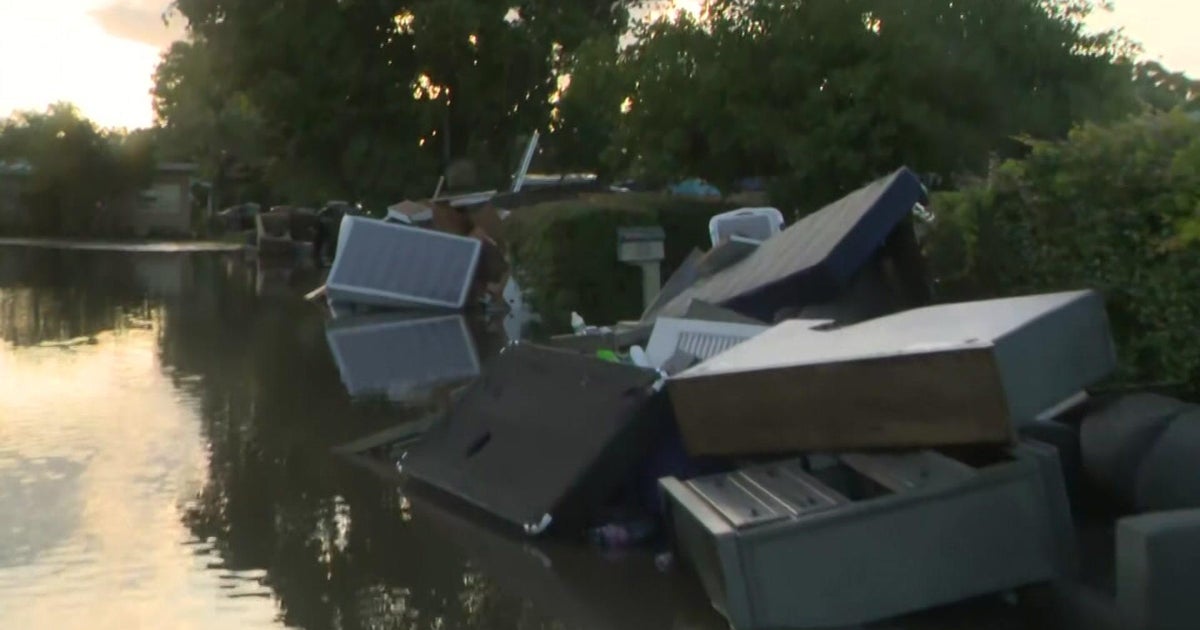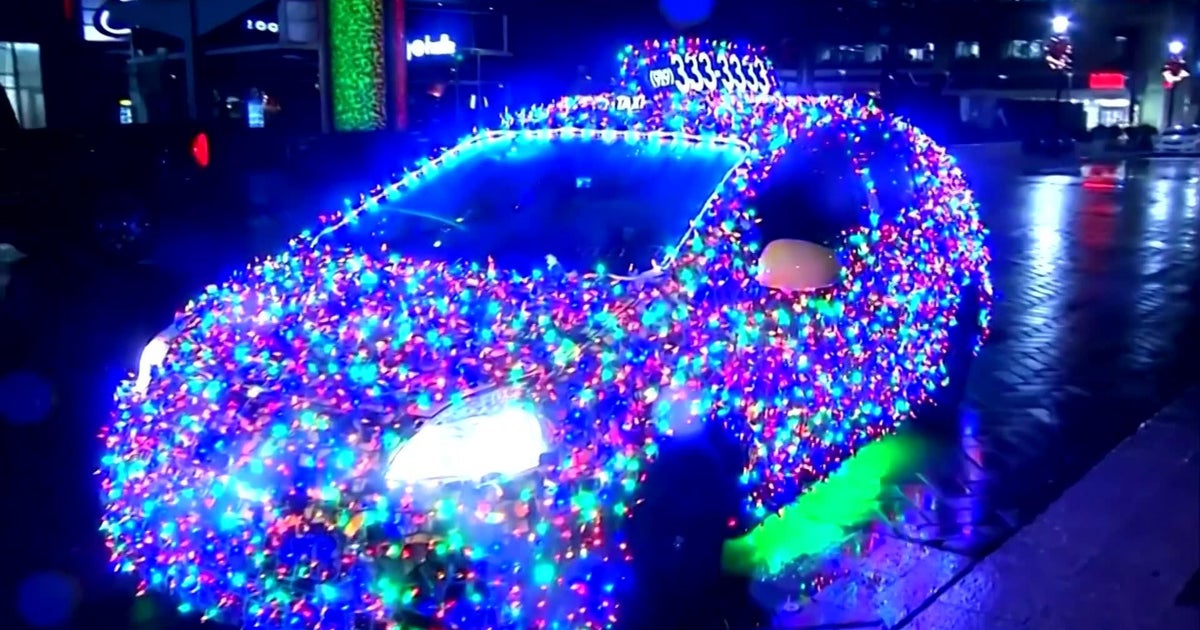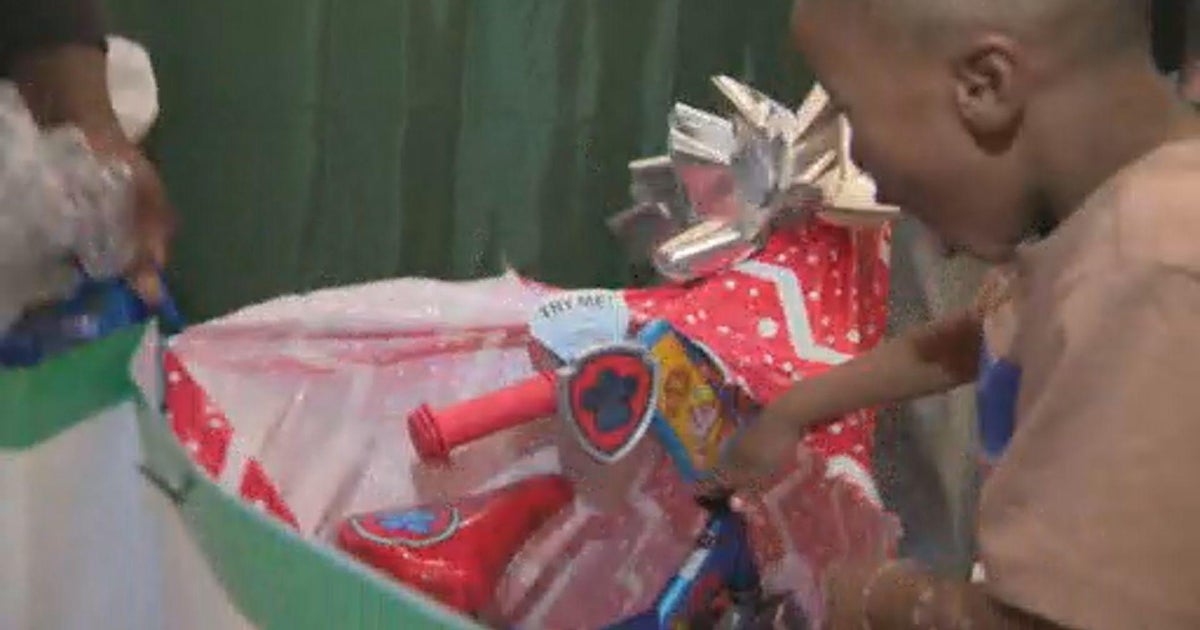The Invisible Wounds of War
MIAMI (CBS4) - "I was extremely suicidal," admitted Barry Offenburger, a U.S. Army veteran.
"I was just a couple of inches between life and death," confessed Jeffrey Ruiz, who also joined the Army.
"I was drinking," said Barry.
"I was having a lot of anxiety. I was having nightmares," declared Ruiz.
Offenburger added, "I had rage, anger issues, wanted to start fights with random people."
Thirty-three year old Offenburger of Miami survived 8-months in Afghanistan. Twenty-five year old Jeffrey Ruiz of Houston spent 13-months in Iraq.
Each soldier made it home whole, all limbs intact.... but broken and tormented by their invisible wounds.
"I started having problems with PTSD and nightmares, anxiety and depression," Barry admitted to CBS4's Antonio Mora.
"I was on so much medication. I needed someone to help take care of me," Jeffrey said.
Jeffrey's wife left him and he moved back in with his parents.
Margo Bartlett is his mother. "I got angry because I gave the Army a healthy child and then I got a broken child when he came back."
Offenburger was in a troop carrier with 30 soldiers, when it rolled over trying to avoid a suspected IED. Barry was thrown from the truck and hit his head.
"They never diagnosed me with any head trauma," said Offenburger.
But when he returned to Miami, Barry began to change.
"My anger was out of control. I started self-medicating with drugs and alcohol. I was no longer happy, even though I had a ton of things to be happy for," explained Barry.
That's because his fiance`Erika Vanderbiest had just moved in with him and she was pregnant.
"It was blinds shut, no lights in the house, I don't want to get out of bed… very bitter and angry with life," said Vanderbeist. "It was rough! It was a very bad place to be. Very bad."
CBS4's Antonio Mora asked her, "Did you live in fear?"
"I did," she replied. "I'd be lying if I said I didn't."
While Barry spiraled into a dark hole... Erika put aside her fears and found the determination to get him help.
"I'm a fighter and I love him," she explained
Erika found help in another hole of sorts... a hyperbaric chamber.
"And I said hyper what? Ok."
A hyperbaric chamber is a pressurized enclosure where a patient spends time inhaling 100% oxygen.
For decades, hyperbaric chambers have been used to treat decompression sickness and severe wounds, including burns.
"The presence of oxygen is how things grow and how we heal," explained Ray Cralle, a physical therapist in Delray Beach.
Cralle explained how the chamber dramatically increases oxygen in tissue, causing your body to release your own stem cells... accelerating healing. He's convinced it can also heal brain trauma, an often undiagnosed problem in thousands of soldiers returning from wars abroad.
"Something horrible is happening because of these explosive devices that are not being looked at," explained Cralle. "Their brain imaging looks different than if I hit you with a baseball bat."
A focused brain injury such as a concussion from an elbow to the head, as was seen in late April on ESPN when the LA Lakers played the Oklahoma City Thunder... can be detected with common diagnostic scans.
But Cralle says only a Nuclear Spect Scan can detect the collection of little air bubbles in the brain that are caused by repeated exposure to concussive blasts.
"On paper on the record... 46 IEDs impacted on my vehicle," said Ruiz about his time in Iraq. "An RPG came right over my truck and impacted the wall that was probably about 5-feet away from me. It happens so fast. You just feel the heat. And you get kind of like... just stars."
"The veterans, their brains almost look like popcorn cause they've been hit in so many areas," noted Cralle.
He showed CBS4 Ruiz's brain imaging before his 40 hyperbaric treatments. It appeared pock-marked, irregular... like a bowl of popcorn. Then Cralle showed us the images after treatment. Those scans show a smooth and rounded normal brain.
"We flew him back nine months later to be sure we didn't have some short-term effect and we retested him. Psychologically he even did better," said Cralle.
Ruiz couldn't agree more. "I went from not being able to find my house that I'd lived in for years, to making the Dean's list every semester since then."
"He's back!" exclaimed his mother. "And that's what it took. I do believe."
But no substantial scientific studies have been finalized to determine the effectiveness of the chambers on brain trauma, so insurance doesn't cover the treatment. Veterans such as Ruiz and Offenburger have to depend on the kindness of strangers like Cralle, who is donating his services, and retired Marine Corps. Lt. Col. Tony Colmenares.
"You're pretty much a true believer in this treatment?" Mora asked the Lt. Col.
"Oh yeah! I'm a true believer!" declared Colmenares. He headed a Red Cross program that paid for the soldier's room, board and transportation to treatment in Cralle's hyperbaric chambers.
Colmenares worries there is no way to treat the injured among the thousands of troops returning to South Florida.
"People are coming back that otherwise would have been lost in other wars. So now we're trying to figure out… how do we take care of these invisible wounds?"
The Pentagon began an extensive study of hyperbaric chambers in the treatment of brain injury almost 18-months ago. But even if found effective, it will take years before the chambers are rolled out to treat our troops.
If Barry had been forced to wait that long...
"I don't think I'd be here. I'd probably either be dead or in jail," Offenburger confessed.
Instead, Barry and Erika are watching their 2-year old Isabella... grow up.
Erika said she is grateful her man got this help. "I hope it gives someone, at least one person, a little bit of hope that there is help."
CLICK HERE to link to Cralle Physical Therapy.



